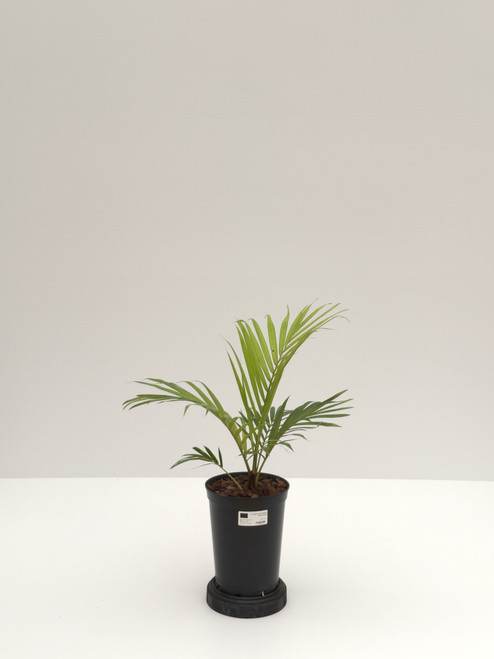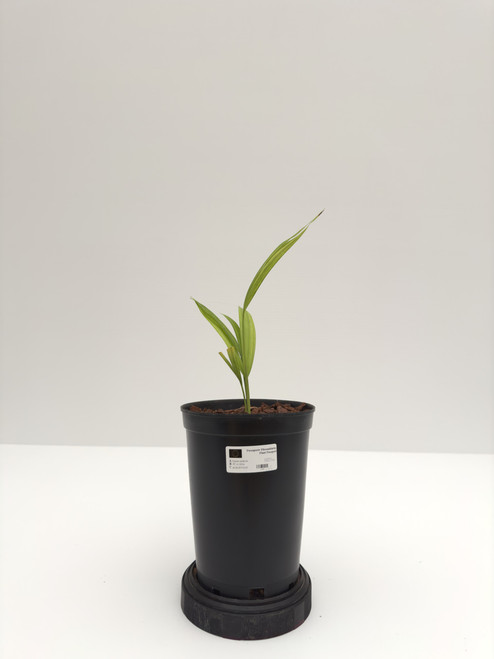Product Description
Habitat and Distribution
Madagascar, 200 km. west of Toamasina.Description
This most attractive palm with bright, almost fluorescent, ivory white new spear and petiole is almost impossible to misidentify as a juvenile. No other species is similar enough at this stage to cause confusion. Photos of a mature adult have yet to be knowingly identified.
Solitary palm. Leaf lamina 378 cm; unequal base of lamina - 85 leaflets on one side of rachis, 6 extra leaflets on other; middle leaflet 108 cm long x 8.5 cm wide; regularly arranged with conspicuous ramenta on under-surface. Petiole width 10 cm at base./Kew. Editing by edric.
Culture
Cold Hardiness Zone: 10a
Comments and Curiosities
Etymology: Genus name Chrysalidocarpus; Derivation obscure. Specific epithet, From the Greek meaning white wool referring to the white indumentum on the spathes and leaf petioles.
A small amount of seeds of this magnificent and apparently undescribed palm from Madagascar had first been brought into cultivation in the mid 1990's as D. tsarantananensis. Its origin had been lost subsequently, leading some to think it may even have gone extinct, the palm has now been found again in rainforests in the mountains of eastern central Madagascar. It has a few features that are reminiscent of D. bejofo and seems to be related to that species. In cultivation it is now mostly referred to as Dypsis sp. 'white petiole'. While it appears to be rather slow growing, at least in its early stages, it develops into a breathtakingly beautiful ornamental palm with white leaf stalks (petioles) and white leaf bases that fade into orange brown towards the base. The leafstalks and bases have a curious, soft, felt-like surface. The leaves are strongly keeled and beautifully recurving towards the tip and hold numerous, evenly arranged, stiff, deep dark green leaflets that contrast stunningly with the white petioles. The compact and much-branched flowering stalk is produced from among the leaves and at first protected by a pure white bract. It appears to be an excellent palm for the tropics but may also do well in frost free warm temperate climates. (from rarepalmseeds.com)







